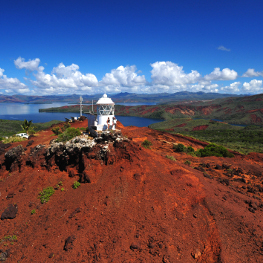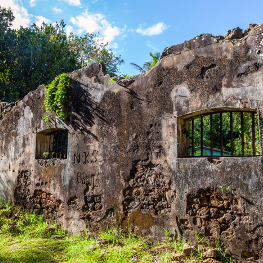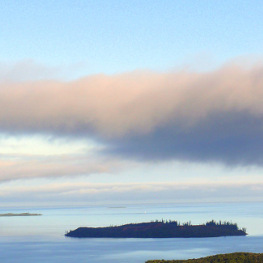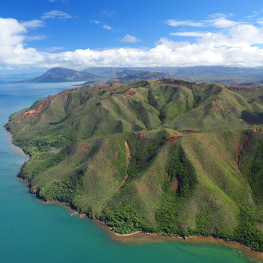In southern New Caledonia, between the Havannah and Woodin canals that separate it from Ouen island, Prony bay is like a little inner sea. At its heart, close to Somme bay, it contains a curiosity that is virtually unique in the world: the Prony needle. A little further on and accessible by taxi-boat, Casy islet offers a beautiful natural setting for a weekend’s camping.
Named with reference to the steamboat that obtained the first hydrographic data of its sea bed between 1853 and 1855, Prony bay offers a stunning contrast between the deep blue of its water, the red earth so characteristic of the South and the unique green of the New Caledonia pines abundant in the bay.
-
Meet the humpback whales
In addition to the humpback whales that come to reproduce there in the austral winter (approximately from mid-July to late September), the bay offers highly interesting undersea landscapes with coves whose sea bed is carpeted with rare coral species. Prony bay is also renowned for certain species of shells with no equivalent elsewhere in the world!
-
![Prony bay]()
An undersea needle-chimney virtually unique in the world!
The bay’s undersea features clearly reach their zenith with the Prony needle. Discovered in 1979, it is in fact an enormous chimney with a diameter of some five hundred meters at its base (at around -35 meters), and a diameter of a little under 5 meters at its peak, 6 meters above the surface. With its intense hydrothermal activity, this construction offers one of the most original scuba diving opportunities imaginable!
With the warm fresh water from undersea springs pouring in through countless micro-cavities in the walls of the chimney, Prony needle is home to the most unusual of ecosystems!
-
![Casy islet: a hot-spot of Caledonian biodiversity]()
Casy islet: a hot-spot of Caledonian biodiversity
A stone’s throw from the needle, Casy islet also offers its own dose of biodiversity with a plant endemism rate of over 80%, including some stunning orchid varieties! Composed primarily of peridotites, the geological material responsible for the Caledonian land’s rich nickel content, Casy islet is a wonderful natural reserve covering some 40 hectares and reaching a height of 45 meters.
-
![A stroll on Casy islet]()
A stroll on Casy islet
An hour’s stroll is all it takes to take in the full variety offered by this currently unoccupied islet, which was previously home to members of Ouen island’s tribes followed by residents of the Prony penal colony who came over to rear animals or engage in horticulture there.








